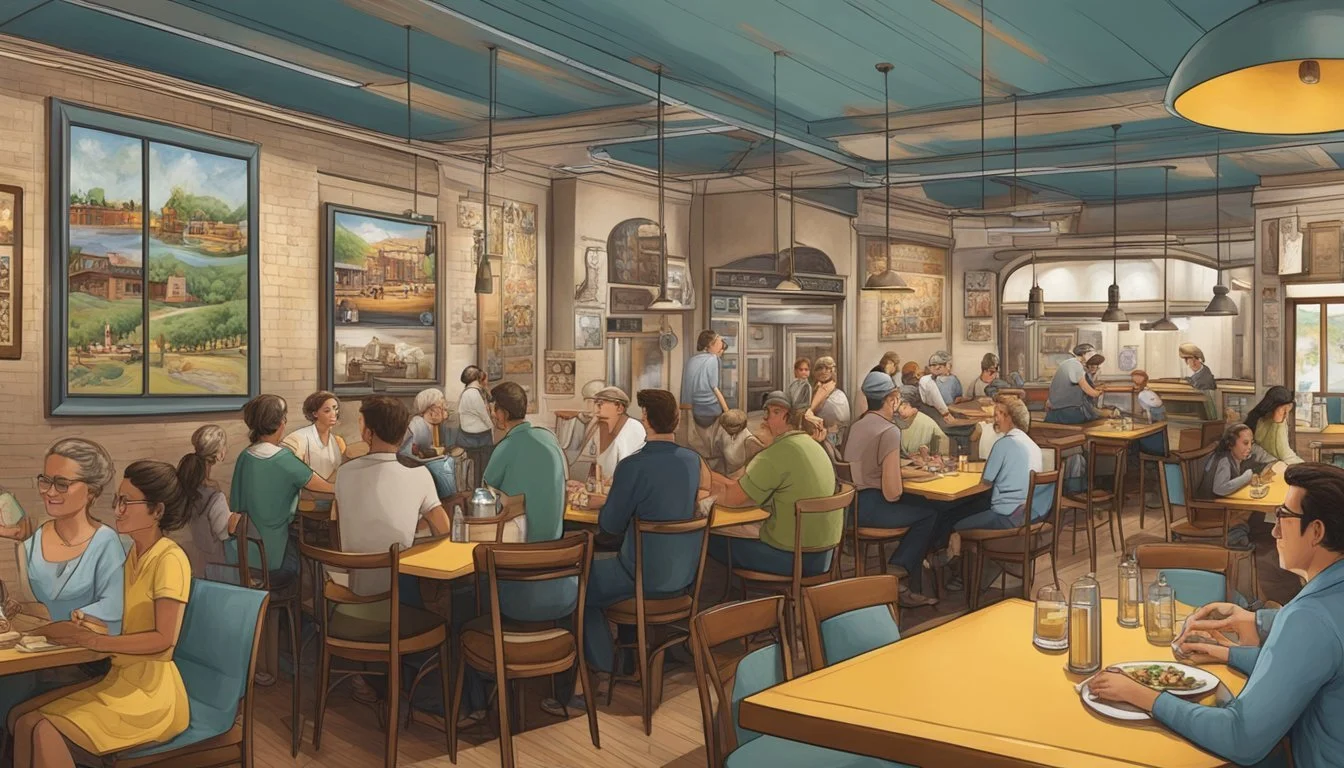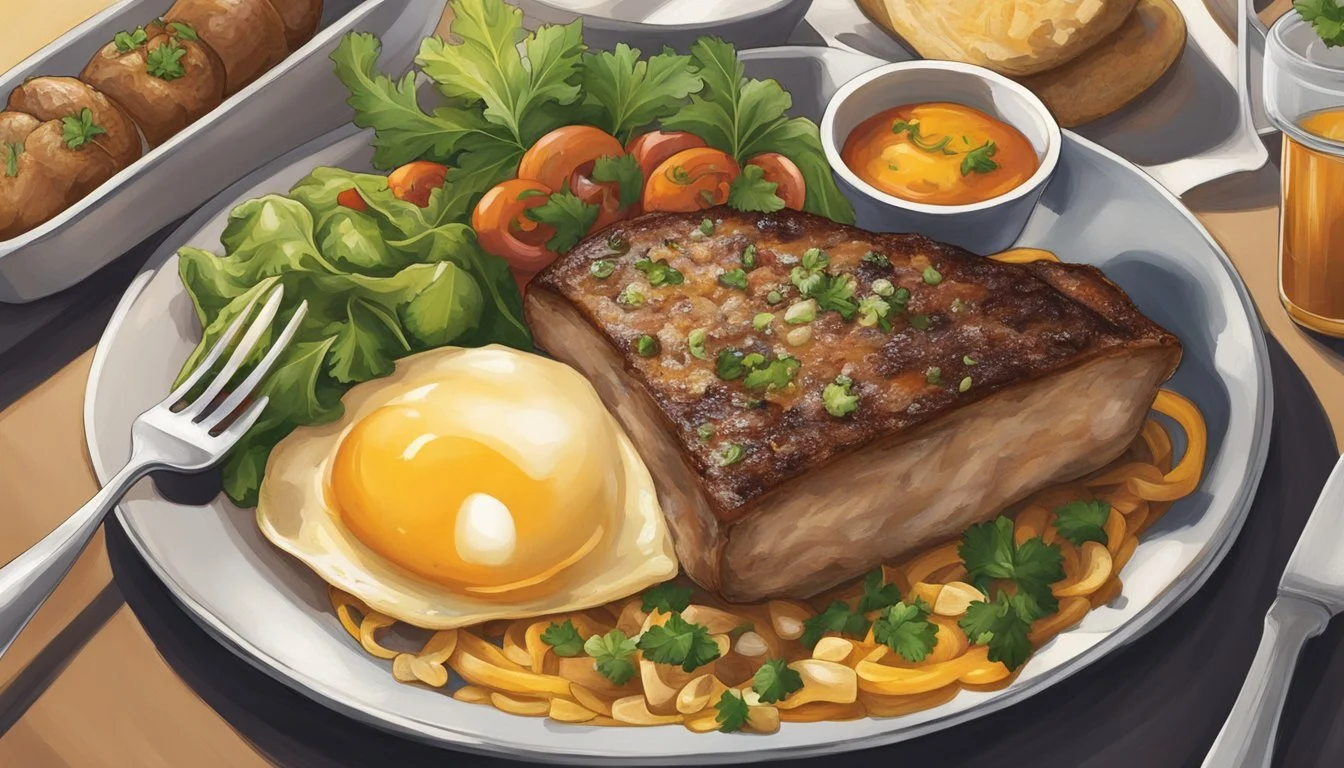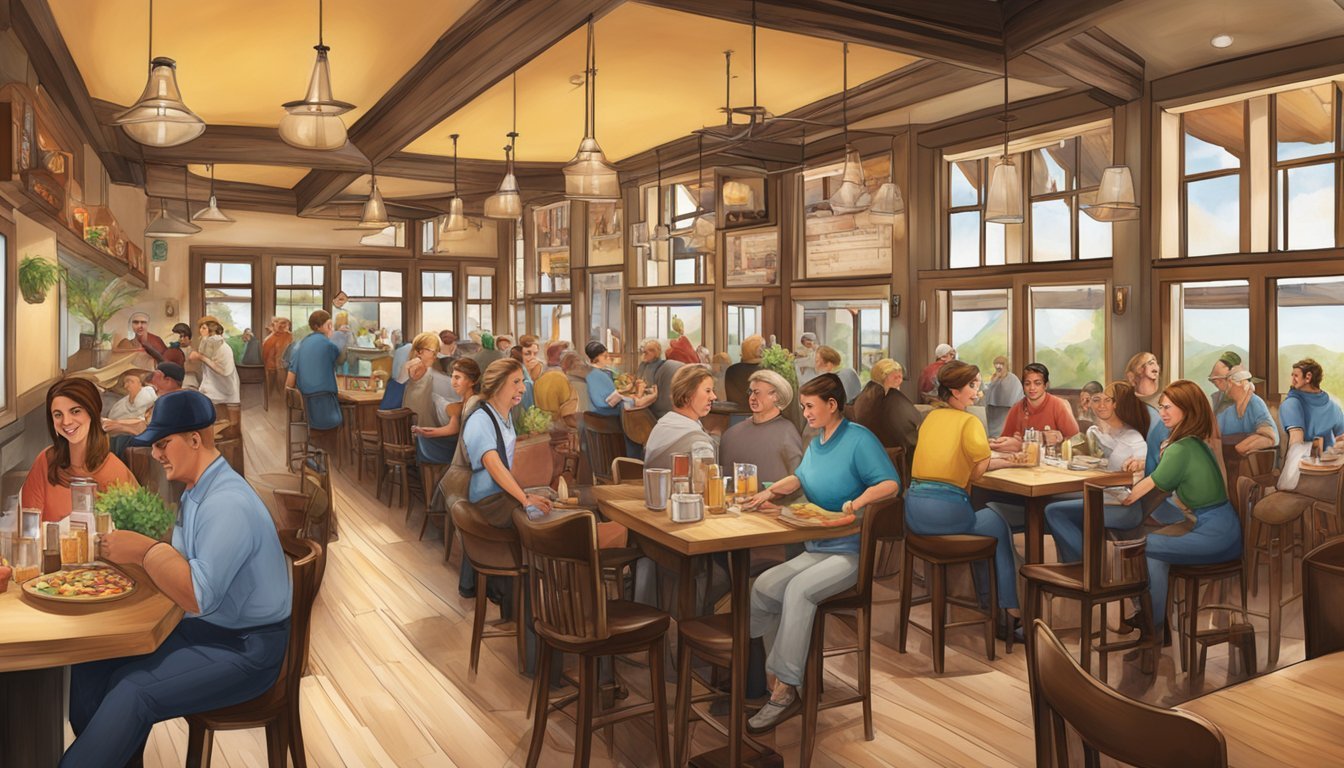The Future of German Texan Cuisine
Preserving a Unique Legacy in Texas Food Culture
The intertwining of German culinary traditions with Texan food culture has produced a distinctive and enduring gastronomic landscape. German settlers in the mid-19th century established towns such as Fredericksburg and New Braunfels, bringing with them their cuisine which has since become woven into the fabric of Texan identity. Events such as Wurstfest, a 10-day festival celebrated in November that attracts over 100,000 visitors, underscore the ongoing popularity and significance of German-Texan cuisine. These festivities and daily food practices showcase the resilient character of German culinary influences in Texas.
The synthesis of German and Texan culinary customs has created a unique taste that is exemplified through the state’s affection for sausages, beer, and baked goods that bear the hallmark of German tradition. German Texan cuisine resonates not just in the celebration of festivals but also in the proliferation of German-style eateries and the presence of German-inspired dishes on Texan menus. This speaks to a legacy that has not only endured but also evolved, finding new expressions and admirers among the diversity that characterizes Texas food culture today.
Looking ahead, German Texan cuisine's legacy is likely to continue and evolve in Texas's dynamic food culture. This integration serves as a testament to the state’s capacity to both preserve heritage and adapt to new influences. Through a confident and clear examination of past and present trends, it is evident that the future holds a rich potential for this culinary fusion to further enrich Texas's diverse gastronomic tapestry.
Historical Roots of German Texan Cuisine
The unique fusion of German culinary traditions with Texan staples has its roots in the mid-19th century when a significant number of German immigrants settled in Texas. They brought with them distinct agricultural practices and a food culture that has had a lasting impact on the Texan culinary scene.
Settlement Patterns and Origins
German immigration to Texas blossomed under the auspices of the Adelsverein, also known as the Society for the Protection of German Immigrants in Texas. Led by figures such as Prince Carl of Solms-Braunfels and John O. Meusebach, the organization facilitated the relocation of thousands from Germany to Texas. These settlers established communities, notably in Fredericksburg and New Braunfels, where they could maintain their heritage while adapting to their new environment.
Fredericksburg, founded by the society in 1846, and New Braunfels, established earlier in 1845, became epicenters of German culture in the Lone Star State. The settlers' aspirations and dreams took physical shape in the form of distinctive Fachwerk buildings, communal festivities, and, pivotally, the introduction of their homegrown flavors to the Texas frontier.
Influence of German Migrants on Texan Agriculture
German settlers made significant contributions to Texas agriculture. They introduced various techniques and crops that were not previously common in the region. Focused on sustainability and efficiency, they implemented practices like crop rotation and the introduction of new livestock. Such innovations were fundamental in shaping the agricultural landscape of their new homeland.
The raising of cattle and pigs, critical for traditional German dishes such as smoked sausages, became particularly influential. The legacy of these agricultural foundations is evident in the prevalence of meats in German Texan cuisine today. The Wurstfest in New Braunfels, for instance, is a testament to the enduring significance of German sausage-making traditions within Texan food culture.
Cultural Fusion and Culinary Evolution
This section examines how German Texan cuisine integrates with Mexican and Czech culinary traditions to develop unique Texan flavors, underscoring the rich tapestry of cultures that influence the Southern food scene.
Integration with Mexican and Czech Influences
German Texan cuisine, anchored in deep-rooted traditions, has embraced Mexican and Czech flavors to create a distinctive culinary tapestry. German culture has synergized with Mexican culinary customs, introducing a variety of spices and cooking methods. For instance, the Tex-Mex cuisine phenomenon, a blend of Southern and Mexican flavors, often incorporates local ingredients such as chilies and cilantro, integral to Mexican food culture. Czech traditions also have a significant place on the Texan plate, merging dishes like kolaches and sauerkraut with Mexican-style salsas and proteins.
Mexican Influences: Integration of Mexican spices, use of chili peppers, combining traditional German dishes with Mexican-style tortillas and beans.
Czech Influences: Incorporation of Czech pastries, blending sauerkraut with Mexican flavors, adoption of hearty, meat-based Czech dishes into the Texan diet.
Development of Unique Texan Flavors
The evolution of Texan flavors owes much to the amalgamation of German, Mexican, and Czech ingredients, resulting in a cuisine that's uniquely Texan. Notable for its heartiness, the cuisine often features smoked and grilled meats, a tradition reflecting both German and Southern methods. Local spices and ingredients from Mexican and Czech cuisines further enhance these foundational elements leading to a singular taste experience that stands as a testament to the region's diverse culinary landscape.
Ingredients & Techniques: Bold use of spices, emphasis on smoked meats, and a preference for fresh, local produce.
Signature Dishes: Dishes such as Texan chili, barbecue brisket, and spicy sausages that blend smoking techniques with a rich palette of spices and flavors.
Signature Dishes and Ingredients
This section delves into the core aspects of German Texan cuisine, focusing on the meats and sausages, traditional breads and pastries, and distinctive vegetables and sides that constitute its legacy.
Meats and Sausages
German Texan cuisine features a variety of meats including beef, pork, veal, and chicken. Sausages, such as bratwurst, are a staple, often seasoned with a mixture of spices that reflect both German and Texan flavors. Recipes for schnitzel—a breaded and fried cutlet—also hold a place of prominence within this food culture, regularly employing different types of meat.
Beef: Predominantly used in chili and brisket.
Pork: Central in making sauerkraut-laden dishes and various sausages.
Veal: Occasionally featured in specialty dishes like wiener schnitzel.
Chicken: Commonly served in the form of schnitzel or incorporated into hearty stews.
Traditional Breads and Pastries
Handcrafted breads bear the marks of German influence in their dense textures and rye-based recipes. Pastries also carry a significant German heritage, as seen in Texas through the popularity of strudels filled with both sweet and savory ingredients.
Breads: Rye-based, sourdough, and pretzel breads are typical.
Pastries: Strudels with apple, cherry, cheese, and meats are favored desserts and snacks.
Vegetables and Sides
German Texan side dishes offer a plethora of options rich in flavors and textures. Potato salad, prepared with a tangy vinegar or creamy dressing, stands as a cherished recipe. Sauerkraut, a fermented cabbage dish, is routinely paired with meats to add zest. Vegetables like potatoes are used extensively, both in simple and elaborate preparations.
Potato Salad: Made with mustard, pickles, and sometimes bacon.
Sauerkraut: Often homemade, served alongside sausages.
Pickled Vegetables: Adds sharpness and depth to traditional dishes.
Traditional Dining and Festivities
German-Texan cuisine thrives through family-owned restaurants and local festivals, offering a multitude of dining experiences and communal celebrations rooted in both Texan warmth and German traditions.
Role of Family-Owned Restaurants
Family-owned eateries play a pivotal role in preserving German heritage within Texas food culture. They offer specialized menus featuring a fusion of German and Texan cuisines; breakfast may include a hearty mix of Schnitzel served alongside traditional Texan biscuits, while lunch and dinner menus often boast sausage varieties and schnitzel dishes paired with local beers. Through devoted customer service, these establishments foster a community-centric dining atmosphere that honors their German roots.
Celebrations and Food Festivals
German-Texan culture comes alive during numerous festivals throughout the year, drawing people from all corners of the state.
Wurstfest: This is perhaps the most notable celebration, a ten-day event held in New Braunfels, paying homage to German food and beer with sausages and brews taking center stage.
Oktoberfest: Although many Oktoberfests were paused due to the pandemic, their legacy persists in Texas, where towns with rich German heritage eagerly await their return. These festivals are occasions for donning traditional lederhosen and joining the community in a festive environment.
These gatherings are imbued with a spirit of conviviality, showcasing German cuisine's (What Wine Pairs Perfectly With German Cuisine) profound influence on the Texan palate and its ongoing legacy.
Contemporary Landscape and Innovations
German Texan cuisine continues to evolve, incorporating traditional flavors into the modern dining scene while embracing innovation and new trends.
German Texan Cuisine in Modern Restaurants
In cities like Austin and Dallas, the presence of German Texan cuisine is notable in an array of dining establishments. Fredericksburg and New Braunfels, being central to this culinary identity, feature restaurants that have perfected traditional dishes while also experimenting with contemporary flavors. Noteworthy spots in Central Texas offer a menu that includes both classic German dishes and Texan favorites, reflecting the area's blended heritage.
Schnitzel with a Texan Twist: Schnitzel served with jalapeño-infused gravy.
Modern Bratwurst: Locally sourced meat bratwurst with unique Texan spices.
Adaptations and New Trends
Innovation in German Texan cuisine can be seen through the introduction of local ingredients and modern cooking techniques. Restaurants take pride in adapting old-world recipes to suit the palate of a diverse clientele, often emphasizing the farm-to-table concept that is prevalent in Texan cuisine.
Farm-to-Table Movement: Incorporating locally grown produce to create fresher, more flavorful German-inspired dishes.
Fusion Dishes: Combining German and Texan elements to create inventive new offerings, such as Texan barbecue brisket served with sauerkraut.
These adaptations and trends continue to shape the identity of German Texan cuisine, ensuring its relevance and appeal in the contemporary culinary landscape.
Culinary Heritage and Education
The future of German Texan cuisine is intimately tied to ongoing efforts in education and preservation. By instructing both the German language and cooking customs, Texas fosters a unique culinary heritage that resonates with the traditions of German settlers.
German Language and Cooking Classes
Community organizations and cultural heritage societies play a pivotal role in offering German language and cooking classes. These courses not only teach individuals how to converse in German but also how to prepare authentic recipes that have been passed down through generations. For example:
New Braunfels German Language School: Offers comprehensive language lessons and culinary workshops.
Fredericksburg Heritage Foundation: Runs programs to educate individuals on cooking traditional German dishes.
Preservation of German Culinary Techniques
The traditions brought by German settlers are preserved through hands-on educational experiences. Cooking schools and cultural events focus on maintaining the German culinary techniques that form the bedrock of German Texan cuisine. Key preservation efforts include:
Documenting Heirloom Recipes: Efforts are being made to transcribe and preserve old family recipes within the German Texan community.
Culinary Exhibits: Historic sites, like Pioneer Museums, periodically showcase cooking demonstrations and exhibits, highlighting German culinary heritage.
Impact on Local and Global Food Cultures
German Texans have indelibly woven their culinary heritage into the fabric of Texas food culture, impacting both local traditions and global perceptions of Texan cuisine.
Influence Beyond Texas Borders
The presence of German heritage in Texan cuisine has extended beyond the state, informing a global understanding of Texas’s food identity. Festivals like the Wurstfest in New Braunfels, which attracts over 100,000 visitors, celebrate Germanic culinary traditions, while simultaneously acting as a showcase for Texan hospitality and innovation. The fusion of Texan and German foodways has given rise to new culinary experiences far outside Texas, with dishes like the chicken-fried steak becoming emblematic of this rich cultural mixture.
German Texan Cuisine as a Culinary Ambassador
German settlers in Texas have long used food as a means of cultural expression, preserving their German roots while adapting to local ingredients and tastes. This blend has resulted in unique culinary offerings that serve as a form of culinary diplomacy. Restaurants and chefs championing German Texan cuisine often highlight ingredients and methods that reflect this harmony - like the use of local pecans in traditional German desserts or the transformation of the German schnitzel into the Texan chicken-fried steak. This cultural collaboration has helped cement Texas's place in the global food culture, with German Texan dishes acting as flavorful ambassadors for the state’s diverse cultural landscape.
Conclusion
The ongoing legacy of German Texan cuisine is a testament to the state’s rich cultural tapestry. These culinary traditions, deeply rooted in the early German settlements of the 19th century, continue to influence and enrich Texas food culture. Today, they manifest in festivals such as Wurstfest in New Braunfels, and are evident in the lasting popularity of dishes like chicken-fried steak.
German Texan cuisine demonstrates resilience and adaptability, integrating locally available ingredients with traditional German cooking methods. This fusion ensures the cuisine's relevance and continuity. The commitment to preserving these culinary practices by both descendants of the original settlers and wider communities underscores their importance to Texas's identity.
Expectations are high for the future of this cuisine, as it not only honors its past but also evolves. With a surge in interest among food enthusiasts and chefs who are keen to explore and innovate traditional recipes, German Texan cuisine's footprint is set to expand.
Reflections of this heritage in local dining experiences indicate a society that values its historical threads while weaving them into the contemporary fabric. As such, the culinary legacy of Texas's German immigrants is poised to continue as an integral part of the state’s gastronomic landscape.









